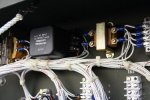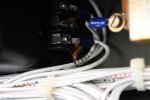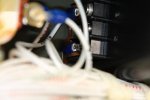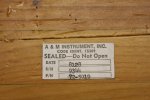RWG421
Member
- 83
- 0
- 6
- Location
- Chandler , AZ
This issue was a side-bar in my (Mep 002A Battery Indicator post 9/26/2011) I hope I am following the sites mores in making it a new post.
I contacted Delks and they have a “new transducer ” (pulled from a new unissued replacement panel) . Mine is an A&M, and the transducer Delks has on hand are Technology Research Corporation. They stated that it should work with my meter….They think.
Are the Frequency Transducers a “Mil Spec item” like a M16 bolt and interchangeable between manufactures? The cost is $55.00 for the transducer, or $110.00 for transducer & gauge. I hate to waste the money and buy both (That’s almost 10% of my mep’s acquisition cost)
Are they straight shoots at Delks? I would hate to blow up a otherwise fine working genste, or waste time and money.
Thanks all for your advice,
I contacted Delks and they have a “new transducer ” (pulled from a new unissued replacement panel) . Mine is an A&M, and the transducer Delks has on hand are Technology Research Corporation. They stated that it should work with my meter….They think.
Are the Frequency Transducers a “Mil Spec item” like a M16 bolt and interchangeable between manufactures? The cost is $55.00 for the transducer, or $110.00 for transducer & gauge. I hate to waste the money and buy both (That’s almost 10% of my mep’s acquisition cost)
Are they straight shoots at Delks? I would hate to blow up a otherwise fine working genste, or waste time and money.
Thanks all for your advice,
Attachments
-
58.5 KB Views: 33
-
35.2 KB Views: 28
-
30.7 KB Views: 26
-
63.4 KB Views: 24
Last edited:







